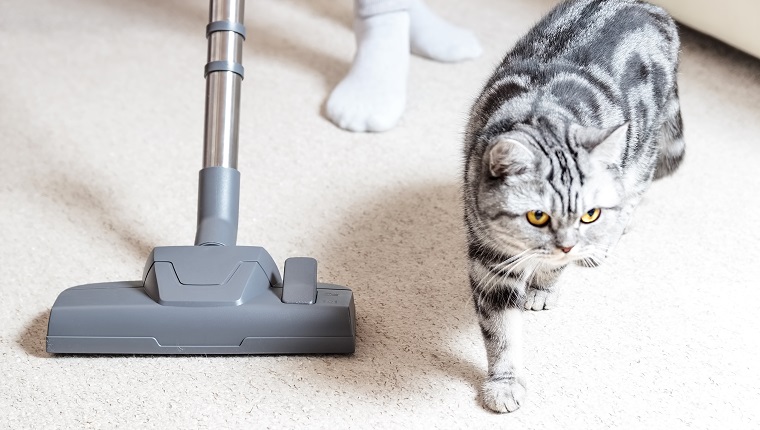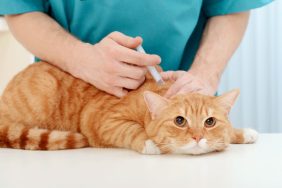Atopic dermatitis in cats is a skin disease that happens when a cat either inhales or ingests a substance, like dust or pollen, that they’re allergic to. Most cats react by scratching the itchy, affected area.
If you see the signs of atopic dermatitis in your cat, then you must get to your veterinarian for a proper diagnosis and treatment.
Here’s what you should know about the symptoms, causes, and treatments for atopic dermatitis in cats.
Symptoms Of Atopic Dermatitis In Cats
Just like when humans experience an allergic reaction, cats often start to itch when they’re afflicted with a case of atopic dermatitis.
Symptoms can vary in severity, type, and location of appearance on the body. Signs might include:
- Red patches, bumps, or spots
- Alopecia (hair loss)
- Scabs or crusting of the skin
- Flaking or scaly skin
- Bad odor from the affected area
- Severe itching, rubbing, or licking of the affected area
The most commonly affected areas of the cat’s body where these symptoms appear are:
- Face
- Front legs
- Ears
- Around the armpits
Along with itching the affected area, a cat might attempt to bite or lick parts of their body in more extreme cases. You may want to place an Elizabethan collar (cone of shame) around your cat while they’re recovering with treatment from your vet.
As an alternative to the cone, your cat may prefer this cloud collar for a little more comfort.
Causes Of Atopic Dermatitis In Cats

The main cause of atopic dermatitis in cats is inhaling or ingesting a substance that the feline is sensitive to. In turn, this can set off an allergic reaction.
Common triggers in cats include household dust and pollen.
Sometimes, a particular food allergy can also cause symptoms of dermatitis.
Treatments For Atopic Dermatitis In Cats
Cases of atopic dermatitis in cats that are caused by airborne allergens can only be controlled, not totally cured.
If you bring your cat to a veterinarian and they diagnose your pet with atopic dermatitis, they’ll often prescribe steroids due to their anti-inflammatory properties. Steroids can also cause side effects, so make sure you only administer them under the precise guidance of your vet.
Antihistamines may provide another option for controlling dermatitis in cats; although, they can be less effective than steroids.
On a day-to-day basis, make sure to keep a smoke-free living environment and clean regularly to avoid any build up of dust if your cat suffers from dermatitis or any breathing issues and other allergies. Keeping your cat indoors can also lessen the chance of pollen aggravating their condition.
Has your cat ever suffered from atopic dermatitis? How did you and your vet help your kitty feel better? Let us know about your experience in the comments section below!









